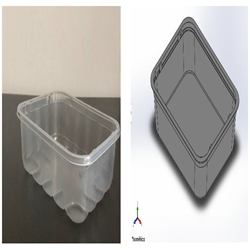Introduction
In the dynamic field of pharmaceuticals, researchers are continually exploring innovative strategies to improve drug delivery systems and enhance therapeutic outcomes. One such breakthrough is the development of dual drug delivery systems, a strategy that involves the simultaneous delivery of two different therapeutic agents to target specific sites within the body. This approach holds great promise in improving treatment efficacy, minimizing side effects, and addressing complex medical conditions. Let's delve into the key aspects of dual drug delivery systems and their potential impact on the future of medicine.
Understanding Dual Drug Delivery Systems
Dual drug delivery systems typically involve the co-delivery of two distinct drugs using a single carrier or platform. These carriers can be nanoparticles, liposomes, micelles, or other nanoscale materials designed to encapsulate and deliver therapeutic agents. The goal is to achieve synergistic effects, where the combined action of both drugs results in a more potent and targeted therapeutic response.
Advantages of Dual Drug Delivery Systems
Synergistic Effects: By delivering two drugs simultaneously, researchers aim to capitalize on synergistic interactions between the compounds. This can lead to enhanced therapeutic effects, allowing for lower doses of individual drugs and minimizing potential side effects.
Improved Drug Stability: The co-encapsulation of drugs within a single carrier can enhance their stability and bioavailability. This is particularly important for drugs with limited stability or solubility, as the carrier provides a protective environment, preventing degradation.
Targeted Delivery: Dual drug delivery systems can be designed to target specific tissues or cells, increasing the therapeutic concentration at the site of action while minimizing exposure to healthy tissues. This targeted approach is especially valuable in the treatment of cancers and other localized diseases.
Customizable Release Profiles: Researchers can tailor the release profiles of each drug independently, allowing for precise control over the timing and dosage. This feature is crucial in achieving optimal therapeutic outcomes and minimizing potential adverse effects.
Applications in Medicine
Cancer Treatment: Dual drug delivery systems have shown promise in cancer therapy by delivering chemotherapeutic agents alongside targeted therapies. This approach can enhance the efficacy of cancer treatments while reducing systemic toxicity.
Infectious Diseases: Addressing microbial infections often requires a combination of drugs. Dual drug delivery systems can improve the effectiveness of antimicrobial therapies by delivering multiple agents with complementary mechanisms of action.
Chronic Diseases: Conditions such as diabetes, cardiovascular diseases, and neurodegenerative disorders may benefit from dual drug delivery systems to address multifaceted aspects of the diseases.
Challenges and Future Perspectives
While dual drug delivery systems offer tremendous potential, challenges such as optimizing drug ratios, ensuring biocompatibility, and overcoming regulatory hurdles must be addressed. Future research is expected to focus on refining these systems, exploring new materials, and expanding applications to a broader range of medical conditions.
Conclusion
The development of dual drug delivery systems represents a significant stride in the quest for more effective and targeted therapeutics. As researchers continue to unravel the complexities of diseases, the versatility and precision offered by dual drug delivery systems hold great promise in revolutionizing the landscape of medicine, providing patients with safer and more potent treatment options.
Date of Input: 29/02/2024 | Updated: 29/02/2024 | roslina_ar
MEDIA SHARING























